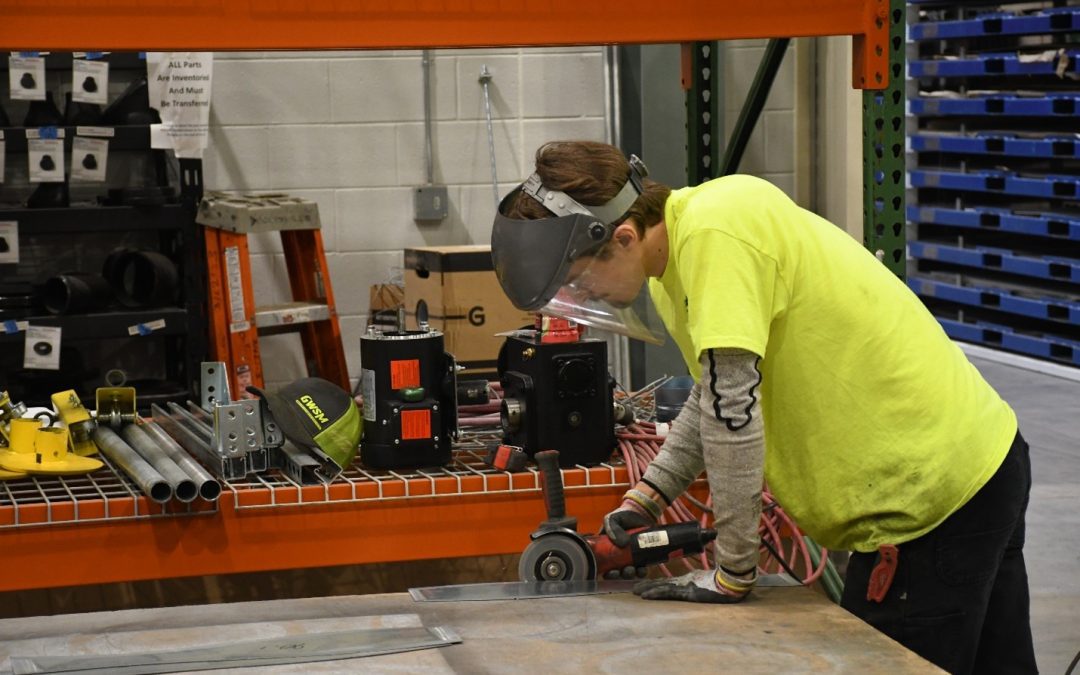In sheet metal fabrication, precision and attention to detail matter. Ask any fabricator who’s had to remake a project and they’ll tell you exactly what detail they missed. Mistakes in the fabrication process can lead to costly delays, poorly constructed products, and unsatisfied customers. At Greater Wisconsin Sheet Metal, we pride ourselves on delivering high-quality results by avoiding common, and most of the time careless, mistakes. Here’s a look at some typical fabrication mistakes and how to avoid them.
Inaccurate Measurements: One of the most critical aspects of sheet metal fabrication is ensuring accurate measurements. Even a minor error can throw off an entire project. Things like worn tools, failing to zero your measuring tools, mal alignment, the environment, and temperature changes can all cause inaccurate measurements.
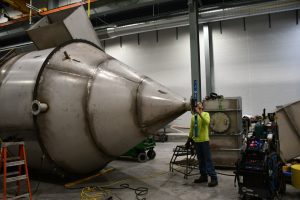
How to Avoid It:
-
- Double-Check Measurements: Take your time when measuring. Always measure no less than twice before cutting or forming anything. Using digital measuring tools can enhance precision and minimize errors.
- Use CAD Software: Implement Computer-Aided Design (CAD) software to create precise plans and reduce human error. This software helps in visualizing the project and making accurate adjustments before actual fabrication begins.
- Take care of tools: Caring for measuring tools and equipment is as important as caring for production tools. These tools are the first place to look when inaccurate measurements happen. Remember to also calibrate, often.
- Train staff thoroughly: Make sure anyone working with measuring understands the tools used and how to properly take measurements.
Incorrect Material Selection: Choosing the wrong type of metal for a project can compromise the structural integrity and functionality of the finished product. The wrong type of metal can also be rejected by the client, forcing you to re-work the entire product. This type of issue arises when a lack of materials knowledge takes place. From there it snowballs into cost-driven decisions, since the best material isn’t always the cheapest, and if you don’t know what you are doing, the incorrect material ends up being chosen because it’s cost effective. Sometimes the specifications don’t clearly call out the material being required. Finally, poor communication between designers, engineers, and fabricators can cause the wrong material to be chosen.
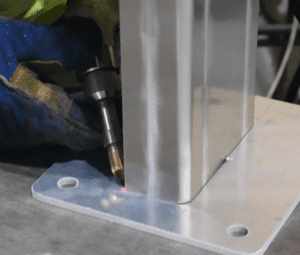
How to Avoid It:
-
- Understand Material Properties: Familiarize yourself with the properties of different metals and alloys. Select materials based on the specific requirements of your project, considering factors such as strength, durability, and corrosion resistance.
- Consult with Experts: When in doubt, consult with a material specialist or engineer to ensure you’re making the best choice. Experts can provide insights on the latest materials and their applications. At Greater Wisconsin Sheet Metal we have access to several disciplines of engineering talent and we’re not afraid to use them.
Improper Welding Techniques: Welding mistakes can lead to weak joints and structural failures. Welding is a critical aspect of metal fabrication, and mistakes can compromise the integrity, strength, and appearance of the final product. Things like incorrect electrode or filler material, poor preparation, poor fit-up, incorrect welder settings,
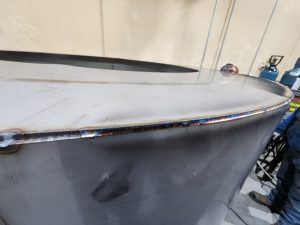
How to Avoid It:
-
- Qualified Welders: Ensure that your welders are properly trained and certified for the specific types of welding required. Continuous education and certification updates are crucial.
- Regular Inspections: Conduct regular inspections of welds to identify and address issues early. Use non-destructive testing methods to ensure weld integrity without compromising the structure.
Overlooking Thermal Expansion: Metal expands and contracts with temperature changes, which can cause warping and misalignment if not accounted for.
How to Avoid It:
-
- Plan for Expansion: Incorporate allowances for thermal expansion in your designs. This might involve using expansion joints or designing components with sufficient clearance.
- Controlled Environment: Whenever possible, perform fabrication in a temperature-controlled environment to minimize the effects of thermal expansion and contraction.
Inadequate Surface Preparation: Skipping or rushing the surface preparation can result in poor adhesion of coatings or finishes.
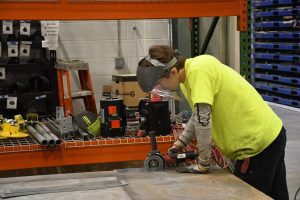
How to Avoid It:
-
- Thorough Cleaning: Ensure all surfaces are thoroughly cleaned and free of contaminants before applying any coatings. Use appropriate cleaning agents to remove oils, dust, and debris.
- Proper Abrasion: Use the correct abrasion techniques to create a surface profile that will enhance adhesion. This can include sandblasting or using abrasive pads to roughen the surface for better coating adherence.
Ignoring Safety Protocols: Safety should never be an afterthought in fabrication. Accidents and injuries can halt production and lead to significant costs. Embracing the 6S methodology (Sort, Set in Order, Shine, Standardize, Sustain, Safety), we understand that a strong safety culture directly influences the quality of our work. Safe working culture reduces accident and injury. It creates consistent focus and attention to detail, and improves morale and motivation.
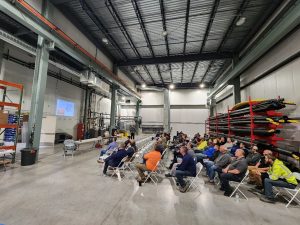
How to Avoid It:
-
- Strict Safety Policies: Implement and enforce strict safety protocols. Regularly review and update these policies to align with industry standards. Consider methodologies like 6S which include safety as a non-negotiable culture.
- Regular Training: Provide ongoing safety training for all employees. Keep the training sessions engaging and up-to-date with the latest safety practices.
- Proper Equipment: Ensure all workers have access to and use the appropriate safety gear. Regularly inspect and maintain safety equipment to ensure it is in good working condition.
Lack of Quality Control: Skipping quality control steps can result in defects going unnoticed until it’s too late. Costs rise and efficiency declines with a lack of proper quality control. Product quality is also at risk. You can have the highest level of talent in the industry and lack of quality control will destroy that quality. Lack of QC provides additional risk and potential for reputation damage to occur.
How to Avoid It:
-
- Implement QC Procedures: Develop and adhere to robust quality control procedures throughout the fabrication process. Use checklists and automated inspection tools to ensure consistency.
- Continuous Improvement: Regularly review and improve QC processes based on feedback and new technologies. Encourage a culture of quality where employees are motivated to identify and correct issues proactively.
Conclusion
Avoiding these common mistakes requires vigilance, proper training, and the right tools. At Greater Wisconsin Sheet Metal, we are committed to excellence in every project. By focusing on precision, safety, and continuous improvement, we deliver top-notch results that meet and exceed our clients’ expectations.
Let’s build something together.
If you have any questions or need expert advice on your next sheet metal project, don’t hesitate to contact us. We’re here to help you achieve success without the stress of common fabrication errors.

